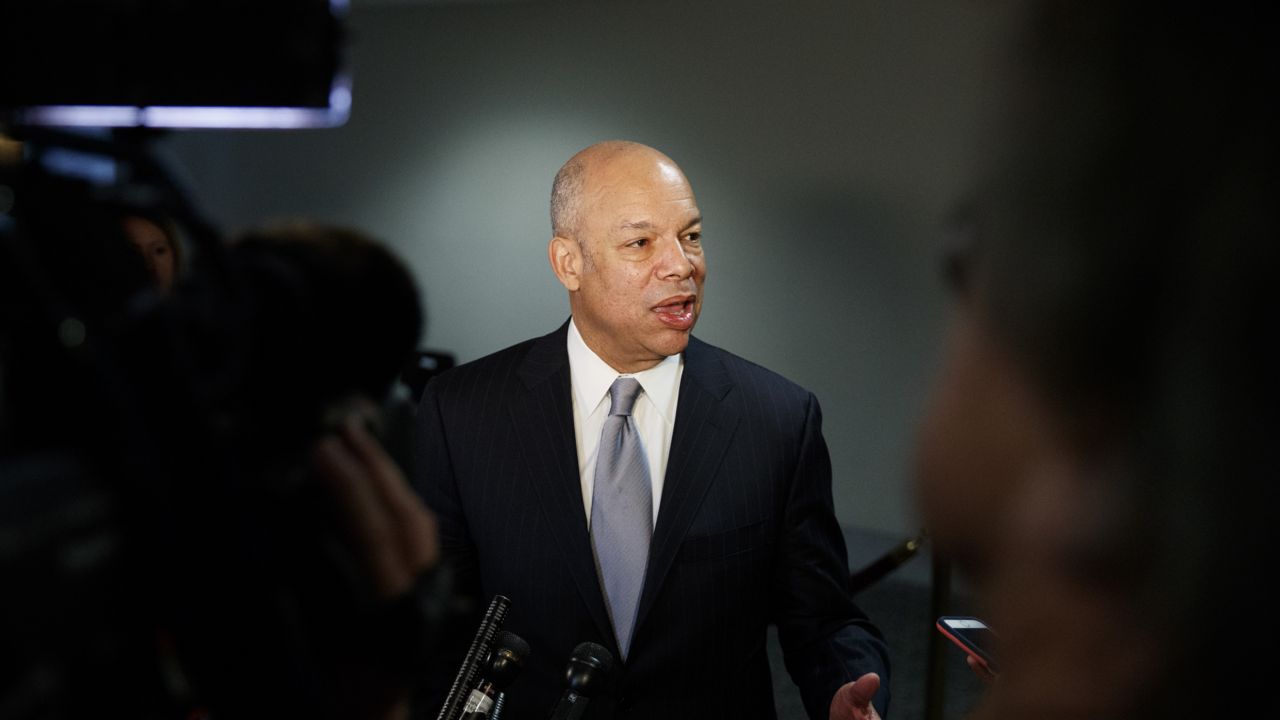A former top government official on Wednesday contributed to the mounting discourse around gun violence in the wake of several mass shootings across the United States, including the recent massacre at an elementary school in Texas which left 19 children and two adults dead.
Former Secretary of Homeland Security Jeh Johnson, who served in the position from 2013 - 2017 under the Obama administration, posited what he believes may be the only way to spur the nation’s lawmakers to act on the issue of gun violence: by showing graphic images of the aftermath to the public.
“[S]omething graphic is required to awaken the public to the real horror of these repeated tragedies,” Johnson wrote in an op-ed published in the Washington Post on Wednesday, asserting: “Certain images do more than speak a thousand words. Some actually reveal to us what no words can adequately convey. Images have the capacity to shock the conscience into action, galvanize a population, and alter the course of history.”
Johnson said the United States needs what he deemed another “Emmett Till moment,” recalling the brutal 1955 abduction and murder of the 14-year-old Black teenager in Mississippi.
After Till’s body was discovered, his mother – Mamie Till Mobley – insisted on holding an open-casket, public funeral to show her son’s brutalized body. Tens of thousands of people attended the memorial service, and graphic images of Till’s body were published in Jet Magazine, ultimately serving as a catalyst and turning point for the civil rights movement.
Johnson wrote he believes the lack of action on gun reform is because both politicians and the general public “lack a vivid understanding of the price being paid.”
“The horror has been kept under wraps,” Johnson wrote. “To truly judge the trade-offs of the status quo, the death and destruction must be honesty (sic) revealed. We need a game changer. We need an Emmett Till moment.”
Amid this discourse, a number of mainstream media outlets have grappled with decisions about what images to show and whether or not to warn viewers about what they might see.
Relatives of mass shooting victims are, in large part, opposed to sharing such graphic imagery of their loved ones.
Nelba Márquez-Greene, whose daughter, Ana Grace, was among the victims of the 2012 mass shooting in Sandy Hook, Connecticut, shared on Twitter she has been inundated with requests to share autopsy images of her six-year-old daughter’s body in the wake of the shooting at Robb Elementary School in Uvalde, Texas.
“I know you’re desperately looking for solutions. But actually taking the time to write this all down and press send is just…” she wrote on Twitter. “Our answer is no. And it will always be no.”
“Our ask in these moments should not be of those most wounded, they should be of those most powerful,” she said in an interview with Rolling Stone on Wednesday. “And we’re asking those most wounded to do more work because we feel desperate, we feel scared.”
Erica Lafferty, whose mother, Dawn Hochsprung, served as the principal at Sandy Hook and was also murdered in the mass shooting, posted a similarly direct message to Twitter, writing in all-capital letters: “STOP ASKING ME FOR AUTOPSY PHOTOS.”
“The audacity of those who are asking and demanding Sandy Hook crime scene photos to be released is unfathomable,” Lafferty wrote. “I envy those who don’t and can’t understand the weight of this ask.”
“Releasing photos of a gruesome and horrific crime scene is not going to change anything for the public,” she added, encouraging Americans to instead hold their representatives accountable for change. “It will shock them, make them sad, scare them—but it won’t change anything. Gun lobby-backed lawmakers have seen plenty of grief and horror and have not been moved.”
In his own op-ed, Johnson acknowledged he lacks the “moral standing to tell a parent to accept and approve, for the greater good, the public display of photos of his or her dead child.”
“Only they can judge the additional weight that doing so would place on them, at a time when they are already struggling with unimaginable grief,” he said, adding: “Nor do I suggest the release of any images in particular. But something graphic is required to awaken the public to the real horror of these repeated tragedies.”



